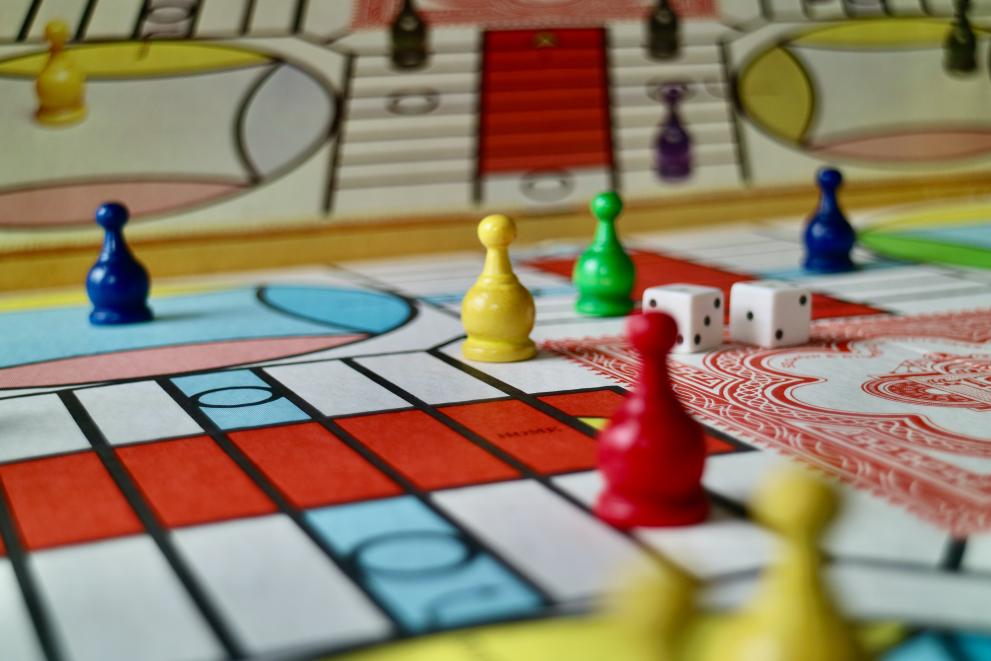
IP advisor at Latin America IP SME Helpdesk
In an increasingly digital world, board games have experienced a remarkable resurgence, capturing the imagination of players of all ages. In this article, we will explore the recent surge in board games and their relationship to intellectual property, a fertile ground for creativity and legal protection.
Board Games Recent Boom
This board game revival has redefined the way people have fun and connect, which is unsurprising given the remarkable evolution of the market.
The statistics speak for themselves: in 2017, the global board game market was valued at around € 8,200 million. Even more astounding are the projections, with this market expected to reach the staggering figure of € 13,700 million by 2023, an impressive growth in just six years.
Gone are the days when board games were limited to classics such as Monopoly or Chess. Nowadays, they cover a wide range of exciting themes, from empire-building to mystery-solving and even simulating epic adventures.
Several factors have contributed to this boom. First and foremost is the role of technology, which has enabled the development of board games that are not only more challenging but also more visually appealing. Advances in graphic design and the production of high-quality components have taken the gaming experience to a new level. In addition, the convenience of access through online platforms has facilitated the connection and competition of players from around the world.
However, the growing popularity of board games has brought several intellectual property (IP) challenges to the fore. Like any other form of creative expression, board games are protected by copyright and other intellectual property laws. Designers and publishers of board games must take care to ensure that their creations are properly protected and do not infringe on the rights of others.
Board Games & IP
Understanding the relationship between board games and IP can be a bit tricky. On one hand, board game creators rely on IP protection to safeguard their investment and encourage innovation in the field. On the other hand, the interactive nature of board games can present challenges in determining which elements can be protected and to what extent. Unfortunately, board games can't be protected as a whole, as one might assume.
The most effective way to protect board games is through a combination of trade mark, copyright, and design protection. In addition, non-disclosure agreements and ongoing monitoring can help maintain the integrity of your game and take legal action in case of infringement.
In order to properly protect the aesthetic elements of the game, we will seek protection under copyright law and design law.
Copyright protection
Copyright law is responsible for protecting original expressions of an idea in the form of creative works. In the game context, this includes elements such as characters, stories, art, music, software, codes, names, and settings. For instance, the board game "Catan" benefits from copyright protection for its visual components, including the design of the board and cards.
This copyright protection in the EU lasts for 70 years after the author's death or the death of the last surviving author (joint authorship of a work), and it provides an exclusive intangible property right. It's important to note that this right is automatically acquired upon creation and does not require registration, although it is advisable to keep evidence of the date of creation and ownership.
In Latin America, copyright protection duration may vary from 50 to 100 years after the death of the author.
Designs protection
On the other hand, European Union design law makes it possible to protect the aesthetic aspect of a product. A practical example would be the design of the "Staunton" chess pieces, which enjoy design protection by meeting the criteria of novelty and distinctiveness and by being duly registered with the European Union Intellectual Property Office (EUIPO).
In the EU, in the case, you decide not to protect the designs in your board game, rest assured that it will be in any case protected in the EU for 3 years from the date you make it public. The EUIPO has a full page providing answers regarding unregistered designs that you might find useful to your case: https://euipo.europa.eu/ohimportal/en/unregistered-community-design
Trade mark protection
As you might imagine, trade mark protection allows owners to register their logos, titles, and slogans to protect their authenticity. It's important to note that this protection does not imply ownership of the words or elements themselves, but it does prevent others from falsely claiming to be the creators of the game. For example, Hasbro cannot prevent the general use of the word "Monopoly", but it can take legal action against those who use the "Monopoly" trade mark without permission.
It should be borne in mind that simply registering a trade mark would not be enough to protect your game. A clear example of this is the case of Hasbro in the European Union, where the company lost part of its trade mark "MONOPOLY" because it was considered to have acted in bad faith by re-registering without genuine use in order to avoid the proof of use requirement. The General Court’s decision highlighted the importance of maintaining and using a trade mark after registration, as registration alone does not guarantee its validity.
Is patent protection an option?
European patent law does not allow board games to be protected as patents or utility models, as they don't usually provide a technical solution to a technical problem. It explicitly states that plans, rules, methods of doing mental acts, games, economic or commercial activities, and computer programs are not considered inventions.
This makes sense because allowing a game to be patented would mean that a company could claim ownership of any gameplay mechanic you can think of. Let's say Mayfair Games patents a concept where "players trade resources, build settlements, and earn points", this could have an impact on games like "Catan". This scenario could continue indefinitely. Does your game revolve around word puzzles and letter tiles? You may need to obtain a license from the patent holder of a game such as Scrabble.
Can I protect the game mechanics?
As mentioned above, the game mechanics themselves cannot be protected. However, the game manual, in other words, the text of the game rules, can be protected by copyright as it constitutes an original literary work. For instance, you cannot prevent anyone from using the concept of rolling a die and moving a piece along a track, but you could protect the set of rules by which each of the pieces can move within a checkered board, as is the case with classic chess.
In our next article (pt. 2), we focus more on what board game companies do to protect their assets in Latin America, before selling their product in Latin America, either online (e.g. e-commerce) or physically in the region.
Contact us
If you have any further questions after checking out this article on Boardgames & IP, don’t hesitate and book a meeting with us!
Details
- Publication date
- 6 November 2023
- Author
- European Innovation Council and SMEs Executive Agency




